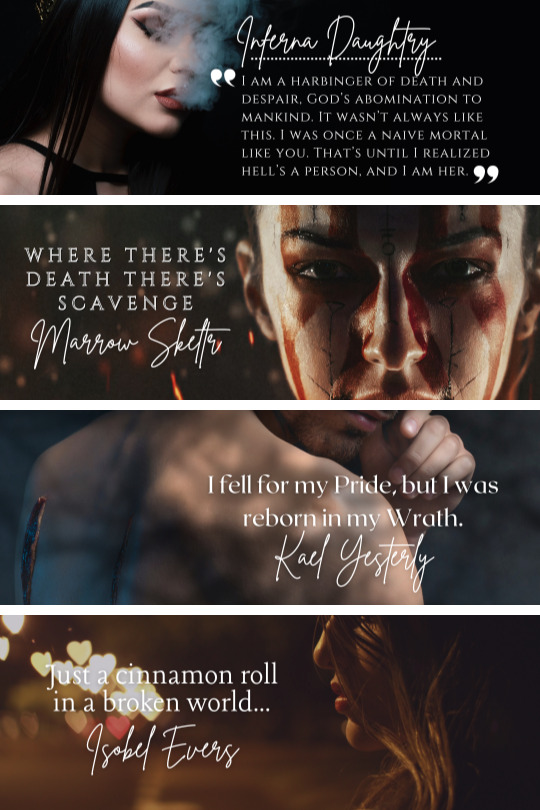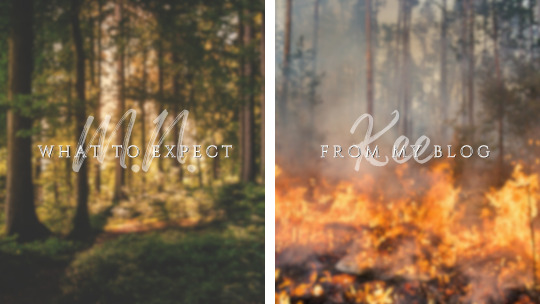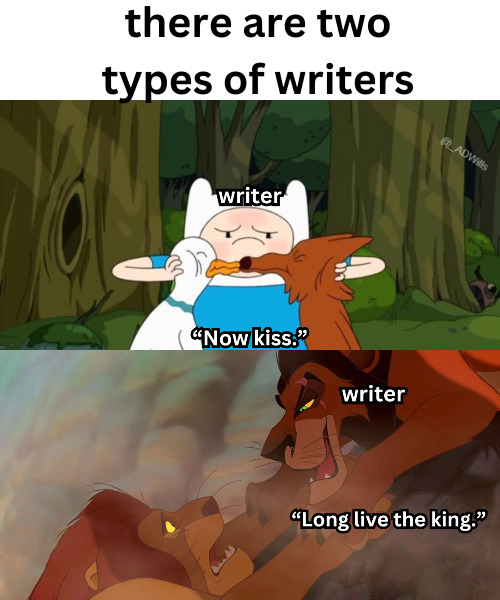Text
As the lines blur, whose side will you choose?
#writeblr#writers of tumblr#writing#writing community#creative writing#books#wip#urban fantasy#paranormal#paranormal romance#dystopian#apocolyptic#werecreature
0 notes
Text
Mapmaking through Words

With the prevalence of bestselling fantasy worlds like Middle-earth, Westeros, and Hogwarts flooding the mainstream media, building a world from scratch can seem like a daunting task. Where does one even begin creating such a masterpiece, and how do you make it stand out from the hundreds already out there? Lucky for you, I live and breathe worldbuilding. I’m here to help you streamline the process and get your creativity flowing through prompt questions and guided brainstorming. Worldbuilding doesn’t have to be this impossible task. With the right building blocks, you’ll be making the dream in your head a reality on paper in no time.
With today's topic, let’s start from the ground up, literally. The most fundamental aspect of worldbuilding is, well, building the world. You can’t create a map without topography, just like you can’t write a story without a physical setting to drop your characters into. Nature is the very foundation that you will build everything off of, and it will ultimately affect the trajectory of your story. Imagine how different a story written in a bountiful farmland would be compared to one written in a desolate wasteland. With that in mind, I want to highlight and discuss our first prompt question.
What biomes are your world composed of? According to the Encyclopaedia Britannica, a biome can be defined as “a major community of plants and animals with similar life forms and environmental conditions.”
There’s much debate on how broad or narrow to categorize these communities, so remember the list I’ve provided below is just a fraction of the diversity this world, and hopefully yours too, offers.
Tropical Rainforest
Hot and humid
High rainfall with no dry season (50 to 260 inches yearly)
Greatest biodiversity in the world
Mostly composed of evergreen plants
Temperate Forest
Mild climate with four distinct seasons
Coniferous and/or deciduous trees
Taiga (Boreal Forest)
Largest terrestrial biome
Coniferous trees
Long, cold winters with little daylight (9 months below freezing)
Short summers (1-3 months) with up to mild temperatures (19 to 70°F)
Desert
Hottest biome
Extreme temperature swings from day to night (-40 to 120°F)
Little to no precipitation (Less than 20 inches yearly)
Tundra
Year-round permafrost allowing only low plants to grow
Dry climate (6 to 10 inches of rainfall yearly)
Below freezing except during short summers (37 to 54°F)
Little to no daylight in winter
Grassland
Transitional biome between forests and deserts
Various names/kinds dependent on location (plains, prairies, steppes, etc.)
Short and/or tall grasses with little to no trees
Savanna
Transitional biome between forests and deserts
Tree-studded grasslands
Warm climate with wet and dry seasons
Freshwater
Low salt concentration
Further categorized as streams/rivers, lakes/ponds, wetlands
Ever-changing biome
Marine
High salt concentration
Largest biome in the world
5 major oceans covering 70% of the Earth
References
1. Augustyn, A. (2023, January 13). biome. Encyclopedia Britannica. https://www.britannica.com/science/biome
2. Moeller, K. (2013, July 19). Boundless Biomes. ASU - Ask A Biologist. https://askabiologist.asu.edu/explore/biomes
#writeblr#writers of tumblr#writing#writing community#creative writing#worldbuilding#worldbuilding tips#writing tips#writing inspiration#worldbuilding wednesday#biomes#nature
10 notes
·
View notes
Text
I'm leaving this here as a reminder to someone that they should be writing, and by someone I mean me. 🤪
Signs You Should Write The Story
1. You can't stop thinking about it
2. It would be exciting and fun to write
3. It's meaningful to you
WRITE THE STORY
20K notes
·
View notes
Text
Weird Brain Hacks That Help Me Write
I'm a consistently inconsistent writer/aspiring novelist, member of the burnt-out-gifted-kid-to-adult-ADHD-diagnosis-pipeline, recently unemployed overachiever, and person who's sick of hearing the conventional neurotypical advice to dealing with writer's block (i.e. "write every single day," or "there's no such thing as writer's block- if you're struggling to write, just write" Like F*CK THAT. Thank you, Brenda, why don't you go and tell someone with diabetes to just start producing more insulin?)
I've yet to get to a point in my life where I'm able to consistently write at the pace I want to, but I've come a long way from where I was a few years ago. In the past five years I've written two drafts of a 130,000 word fantasy novel (currently working on the third) and I'm about 50,000 words in on the sequel. I've hit a bit of a snag recently, but now that I've suddenly got a lot of time on my hands, I'm hoping to revamp things and return to the basics that have gotten me to this point and I thought I might share.
1) My first draft stays between me and God
I find that I and a lot of other writers unfortunately have gotten it into our heads that first drafts are supposed to resemble the finished product and that revisions are only for fixing minor mistakes. Therefore, if our first draft sucks that must mean we suck as writers and having to rewrite things from scratch means that means our first draft is a failure.
I'm here to say that is one of the most detrimental mentalities you can have as a writer.
Ever try drawing a circle? You know how when you try to free-hand draw a perfect circle in one go, it never turns out right? Whereas if you scribble, say, ten circles on top of one another really quickly and then erase the messy lines until it looks like you drew a circle with a singular line, it ends up looking pretty decent?
Yeah. That's what the drafting process is.
Your first draft is supposed to suck. I don't care who you are, but you're never going to write a perfect first draft, especially if you're inexperienced. The purpose of the first draft is to lay down a semi-workable foundation. A really loose, messy sketch if you will. Get it all down on paper, even if it turns out to be the most cliche, cringe-inducing writing you've ever done. You can work out those kinks in the later drafts. The hardest part of the first draft is the most crucial part: getting started. Don't stress yourself out and make it even harder than it already is.
If that means making a promise to yourself that no one other than you will ever read your first draft unless it's over your cold, dead body, so be it.
2) Tell perfectionism to screw off by writing with a pen
I used to exclusively write with pencil until I realized I was spending more time erasing instead of writing.
Writing with a pen keeps me from editing while I right. Like, sometimes I'll have to cross something out or make notes in the margins, but unlike erasing and rewriting, this leaves the page looking like a disaster zone and that's a good thing.
If my writing looks like a complete mess on paper, that helps me move past the perfectionist paralysis and just focus on getting words down on the page. Somehow seeing a page full of chicken scratch makes me less worried about making my writing all perfect and pretty- and that helps me get on with my main goal of fleshing out ideas and getting words on a page.
3) It's okay to leave things blank when you can't think of the right word
My writing, especially my first draft, is often filled with ___ and .... and (insert name here) and red text that reads like stage directions because I can't think of what is supposed to go there or the correct way to write it.
I found it helps to treat my writing like I do multiple choice tests. Can't think of the right answer? Just skip it. Circle it, come back to it later, but don't let one tricky question stall you to the point where you run out of brain power or run out of time to answer the other questions.
If I'm on a role, I'm not gonna waste it by trying to remember that exact word that I need or figure out the right transition into the next scene or paragraph. I'm just going to leave it blank, mark to myself that I'll need to fix the problem later, and move on.
Trust me. This helps me sooooo much with staying on a roll.
4) Write Out of Order
This may not be for everyone, but it works wonders for me.
Sure, the story your writing may need to progress chronologically, but does that mean you need to write it chronologically? No. It just needs to be written.
I generally don't do this as much for editing, but for writing, so long as you're making progress, it doesn't matter if it's in the right order. Can't think of how to structure Chapter 2, but you have a pretty good idea of how your story's going to end? Write the ending then. You'll have to go back and write Chapter 2 eventually, but if you're feeling more motivated to write a completely different part of the book, who's to say you can't do that?
When I'm working on a project, I start off with a single document that I title "Scrap for (Project Title)" and then just write whatever comes to mind, in whatever order. Once I've gotten enough to work with, then I start outlining my plot and predicting how many chapters I'm going to need. Then, I create separate google docs for each individual chapter and work on them in whatever order I feel like, often leaving several partially complete as I jump from one to the other. Then, as each one gets finished, I copy and paste the chapter into the full manuscript document. This means that the official "draft" could have Chapters 1 and 9, but completely be missing Chapters 2-8, and that's fine. It's not like anyone will ever know once I finish it.
Sorry for the absurdly long post. Hopes this helps someone. Maybe I'll share more tricks in the future.
3K notes
·
View notes
Text

My heart characters 💖
#writeblr#creative writing#writers of tumblr#my writing#aesthetic#writing aesthetic#original character#character art#works in progress#writing#writing community
1 note
·
View note
Text
Worldbuilding Tips: How to Find Inspiration

Picture this. You’re minding your own business when out of nowhere you’re struck with creative genius. This new story idea consumes your every waking thought, playing out like a brilliant movie inside your head. However, when you try to put pen to paper (or fingers to keyboard), words fail you. It’s a dilemma all writers face in their career. How do you turn an idea into reality? Don’t fight it. Explore it.
Fun Fact: There’s no right or wrong place to begin building your fictional world. You define your creation journey. The trick is finding what works best for you specifically.
Are you more visual? Pinterest is a great source of inspiration. Keyword searches are your friend. What is a keyword? It’s a “significant word from a title or document used especially as an index to content.” Type in a word(s) into the search bar that summarizes the aesthetic you’re visualizing and let the magic happen. This could be anything from a color, time period, genre, trope, etc. Take one of my own creations, Scavenge Clan, for example. Keywords I associate with it include: hyena, werehyena, bones, gothic, scavenger, vulture culture, vultures, black-haired women, death. Over time, your searches will affect your algorithm, giving you more ideas that line up with your stories in the long run.
Are you more auditory? Creating Spotify playlists that remind you of your story and/or characters can help give you more inspiration and set the mood for when you start writing.
Are you both visual and auditory? I love collecting fan made tribute videos on YouTube of TV shows and movies that give me a source of inspiration for my stories. For example, the TV show Grimm with a splash of the grounders from The 100 inspired my main story universe The Culling Wars.
Wherever you draw inspiration from, take advantage of it. Use it to expand your ideas and to help you when you’re feeling stuck. Remember that every bestselling novel started as a mere idea.
#writeblr#writers of tumblr#writing#writing community#creative writing#worldbuilding#worldbuilding tips#writing tips#writing inspiration#keywords#pinterest#spotify#youtube#writing music
24 notes
·
View notes
Text
Welcome to My Blog

About Me
Hi! My name is M.N. Kee, and I am a 27-year-old woman.
I'm a published author with a pirate short story published in the anthology Tales Untold: Mythos Around the World.
I work as a vet assistant as my day job, but I'm also a graphic designer on the side for Ravens & Roses Publishing.
I have a degree in equine studies and nearly two decades of experience working with horses.
I have a deep love and appreciation for nature, having grown up regularly going to the zoo and watching animal documentaries.
I enjoy written roleplay in my free time.
About My Writing
Fun Facts
Dark fantasy is my go-to genre.
I enjoy using roleplay as a means of writing my books and/or fleshing out characters.
I'm a hardcore plotter and worldbuilder. It's honestly an obsession.
My best friend Renee Christian is also my writing partner.
I'm not afraid to tackle hard subjects in my stories including but not limited to alcoholism, PTSD, sexual assault, self-harm, etc. My hope is to bring awareness to mental health issues.
Writing underdogs, strong female characters, and bad boys are my guilty pleasures.
My Works in Progress
I'm working on two different story universes: Culling Wars and Calamity Saga. The Culling Wars is a dystopian universe where the lines are blurred between man and animal and hero and villain. It's my heart song where I unlock the voices of nature's underdogs. More coming soon on the Calamity Saga...
Current Work in Progress: The Viking's Scavenger. Norse mythology meets were-creatures. Werehyena Marrow Skeltr believes her clan is hiding something. There's more to her family's exile than meets the eye, and she's hellbent on unraveling the mystery. Even if it kills her. A newcomer to Portland, Cade Blackthorne, the demi-god son of Tyr, finds himself caught in the middle of a brutal war between were clans. Sparks will fly and worlds collide when the Viking meets his scavenger.
About My Blog
Worldbuilding tips & prompt questions
Info dump about my WIPs and characters
Random animal facts
Roleplay with my characters
2 notes
·
View notes
